Belonging to the Primulaceae family, the Eastern Shooting Star is a charming perennial native to the American prairie, thriving across hardiness zones 4 to 8. Originating from South Central Canada to the Central and Eastern United States, this native plant is admired for its nodding, star-shaped flowers that bloom gracefully in spring.
Once abundant in moist woods and rocky slopes, the Eastern Shooting Star has faced habitat loss but has found a resurgence thanks to the rise of native plant gardening. Now cultivated in nurseries and home gardens, it offers a chance to bring a touch of natural heritage to your landscape.
| Common name | Eastern Shooting Star, Shooting Stars |
| Botanical name | Primula meadia |
| Family | Primulaceae |
| Species | meadia |
| Origin | South Central Canada to Central & East U.S.A |
| Life cycle | Perennial |
| Plant type | Native Plant |
| Hardiness zone | 4, 5, 6, 7, 8 |
| Sunlight | Partial Shade |
| Soil condition | Clay |
| Soil ph | Acid |
| Drainage | Well-Drained |
| Harvest time | Spring |
| Flowering period | Spring |
| Height | 1 ft. – 2 ft. |
| Flower color | Pink |
| Leaf color | Green |
| Stem color | Green |
| Flower benefit | Showy |
| Garden style | Native Garden |
| Uses | Naturalized Area |
I. Appearance and Characteristics
Primula meadia (syn. Dodecatheon meadia), known by the common names shooting star, eastern shooting star, American cowslip, roosterheads, and prairie pointers is a species of flowering plant in the primrose family Primulaceae. It is native to the eastern United States and Canada, spanning north from Manitoba and New York, south to Texas and Florida.
It has a wide natural habitat, being found in both forests and prairies. It is most often found in calcareous areas. It can be locally common in some areas of its range, however, it can become rare on its geographic edges.
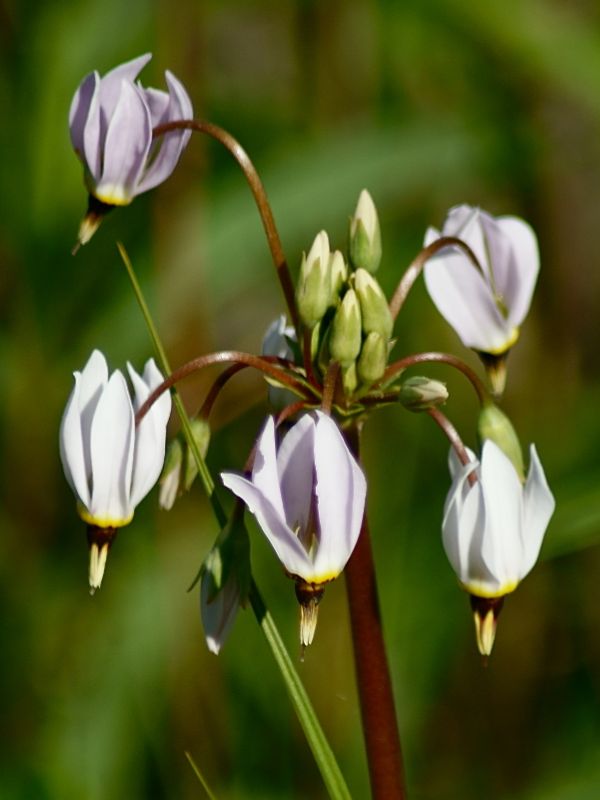
Primula meadia is a perennial, growing to 8–20 in (203–508 mm) high, with flowers that emerge from a basal rosette of leaves (scapose). It blooms in the spring. The flowers are nodding, and form an umbel. Its seeds are dispersed by gusts of wind that shake the erect scapes.
This species is geographically widespread, and has considerable morphological variation across its range. Most southern populations have white petals, while northern populations have white to pink, lavender, or magenta petals.
II. How to Grow and Care
Sunlight
A site with partial sun is ideal for shooting star plants. Because the plants are dormant in the summer, you can plant them under the high canopy of deciduous trees, which provides dappled light in the spring before leafing out to shade the resting phase of the plants. In cooler regions this plant will tolerate full sun; in warmer regions, more shade is preferred.
Temperature and Humidity
Shooting star plants thrive in the mild spring temperatures and gentle rains of April through June. They experience dormancy as summer heats up, but the basal foliage clumps may return as the weather cools in fall. This plant tolerates both arid and humid atmospheric conditions, provided soil moisture is favorable.
Watering
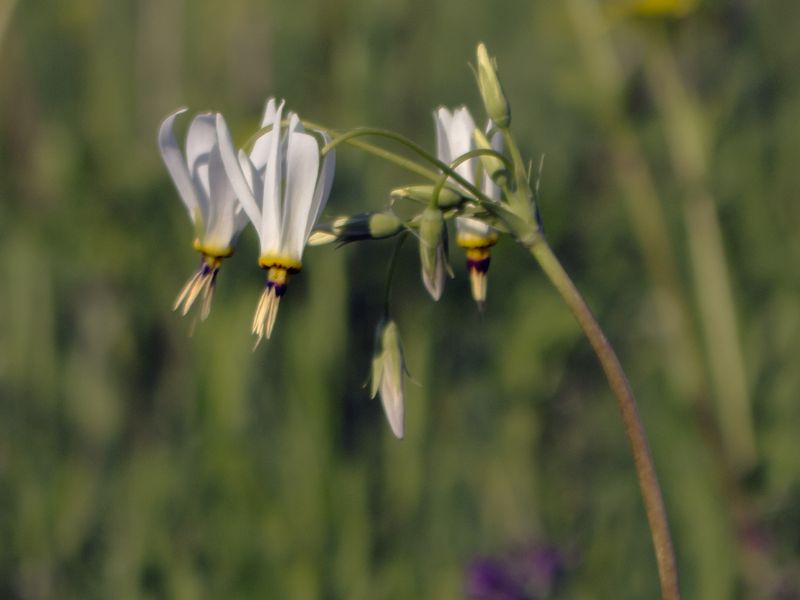
Shooting star has average water needs, thriving with about 1 inch of water per week during the active flowering period. Less water is needed in the heat of summer. Summer dormancy is an adaptation that makes shooting star drought tolerant.
Soil
Shooting star plants grow and colonize areas of well-draining or sandy loam, although they will tolerate some clay soils. Colonization is generally slow with additional plants taking several years to appear. The plants do well in the leaf mold that accumulates under mature trees.
Fertilizing
Shooting star plants don’t need supplemental fertilizer. They are genetically inclined to thrive in native soils, unenriched by additional nitrogen. If your soil is especially poor, you can side-dress the plants with a shovelful of compost when they are actively growing.
Propagation
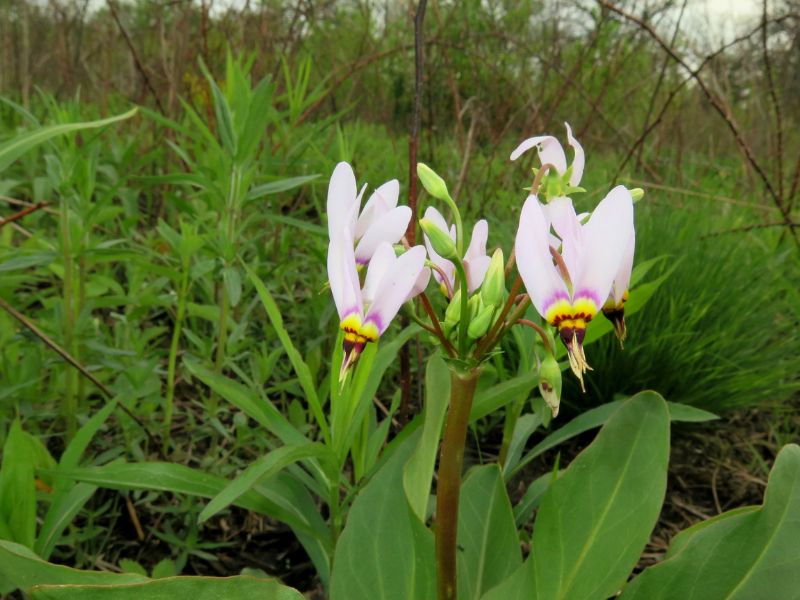
You can increase your shooting star flowerbed by dividing the plants in the fall. Here’s how to do it:
- Use a sharp shovel to dig up the plant’s fibrous root clump from the ground.
- Carefully divide the root ball into four or more pieces, using a shovel or trowel. Each piece should include a section of the plant crown.
- Immediately replant the pieces, spacing the pieces no closer than 1 foot apart.
- As plants grow established, they may produce rosette-shaped offsets around the base of the mother plant. These offsets can be carefully dug up to propagate new plants.
How to Grow From Seed
This is a difficult plant to propagate from seeds, as the tiny seeds require cold stratification in order to germinate. It can take seedlings four to five years to develop into flowering plants. If you want to try it, collect the very fine seed of shooting star plants in July from spent flowers. In late winter, place the seeds in a sandwich bag full of moist peat mixed with vermiculite and place them in the refrigerator for one month. After your last frost, spread the mixture over your chosen outdoor area. As an alternative to stratification, plant outdoors in the fall. Thin seedlings to 1 plant per square foot after germination occurs.
Overwintering
As a native wildflower, shooting star is a tough plant that survives nicely without any special winter preparation. Dead flower stalks can be clipped off, but allowing them to remain will encourage some self-seeding and the gradual spread of the colony.
How to Get to Bloom
Like most native wildflowers, shooting star rarely needs encouragement to produce its late spring flowers. Planting them in well-draining soil in a partial sun location generally guarantees flowering. Avoid the temptation to feed these plants, however, as nitrogen fertilizers can work against you, prompting foliage growth at the expense of flowers. Shooting star may also be reluctant to bloom in locations that are too shady or too wet.
Pests and Diseases
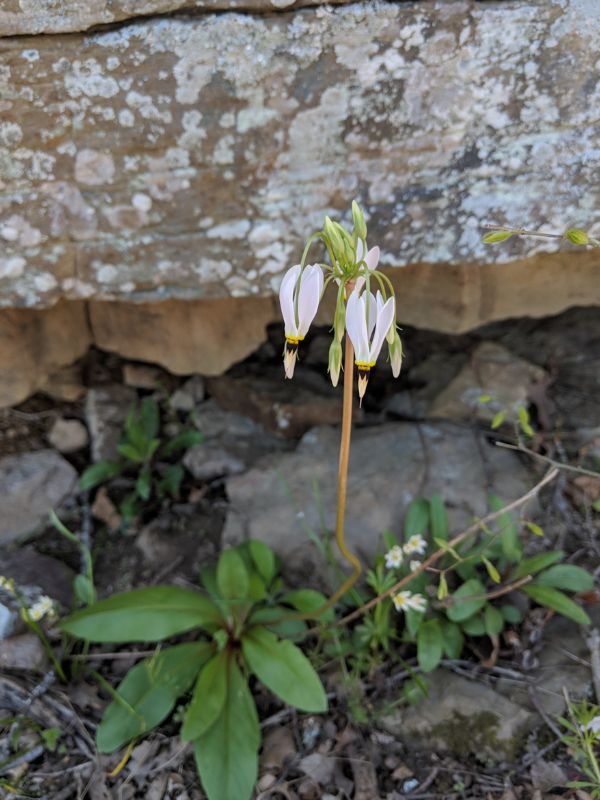
Common Pests and Plant Diseases
Shooting star plants are seldom bothered by pests. In a world where our pollinators face a fragile future, the shooting star serves as an important source of pollen for bumblebees—though not honeybees, since these are nectarless flowers. Because the pollen of the shooting star is trapped in a narrow tubular structure in the flowers, bumblebees must vibrate their bodies to shake the pollen loose. Without this special behavior that allows pollination to occur, the Dodecatheon genus would die out. Protect bees by shielding your shooting star plants from pesticides.
The only serious threat to this plant is excessively dense, wet soil, which can cause root rot.
Common Problems
Shooting star is a largely trouble-free plant once established, with only a couple of common complaints:
Plant Dies in Summer
When they first grow shooting star, gardeners are sometimes disappointed to find that the plant appears to die as summer heat sets in. This is a natural behavior for many wildflowers, a mechanism to survive by going dormant. The basal growth may begin to return as the weather cools in fall, but will almost surely return the following spring. You may want to mark the location of the plant with a small stake to avoid accidentally digging it up after it goes dormant.
Plant Did Not Return in Spring
Though it’s rare for a shooting star plant to succumb to winter, it doesn’t like wet winter conditions. If planted in a low-lying area or in dense, clay soil, shooting star may die from root rot if placed in a spot that remains too wet over the winter.
III. Types of Shooting Star
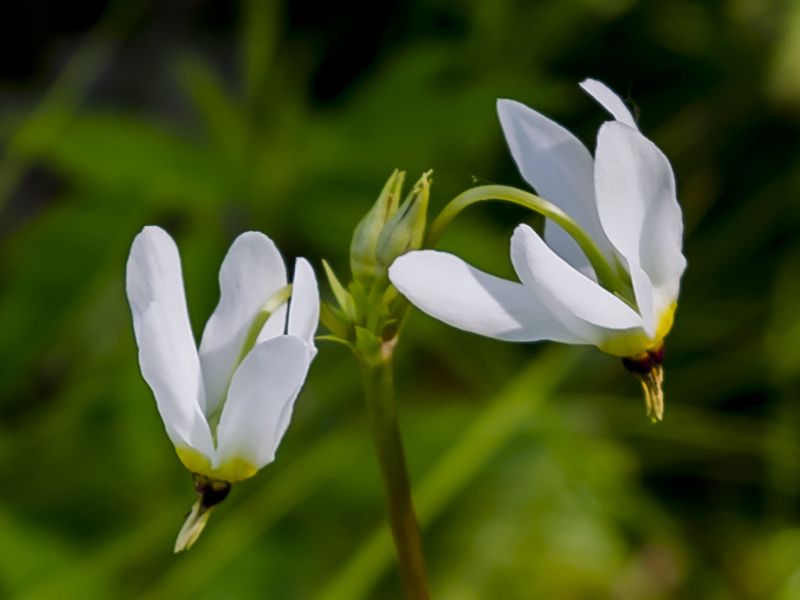
The pure species plant is common in garden cultivation, but there is a white-flowered form (P. meadia f. album) that is also popular. There are also several cultivars to choose from:
- ‘Goliath’ is bred to have larger flowers on taller stalks.
- ‘Aphrodite’ has dark pink flowers that are nearly twice the size of the species plant.
- ‘Queen Victoria’ has large, light pink flowers with yellow bands at the base.
- Variations within the shooting star species occur naturally, and flowers may range in color from white to lavender to dark pink without any intervention from the gardener. The flowers tend to be whiter in the southern part of the hardiness range, taking darker pink or purple hues in the north.
Find Where to Buy the Best Eastern Shooting Star (Primula meadia)
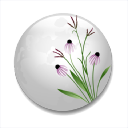


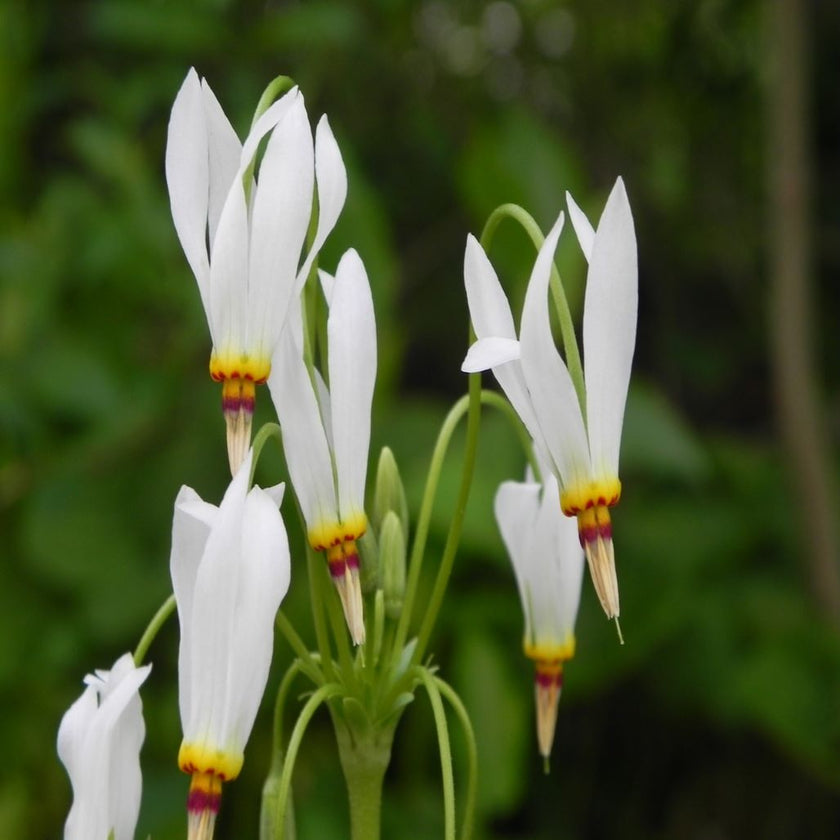





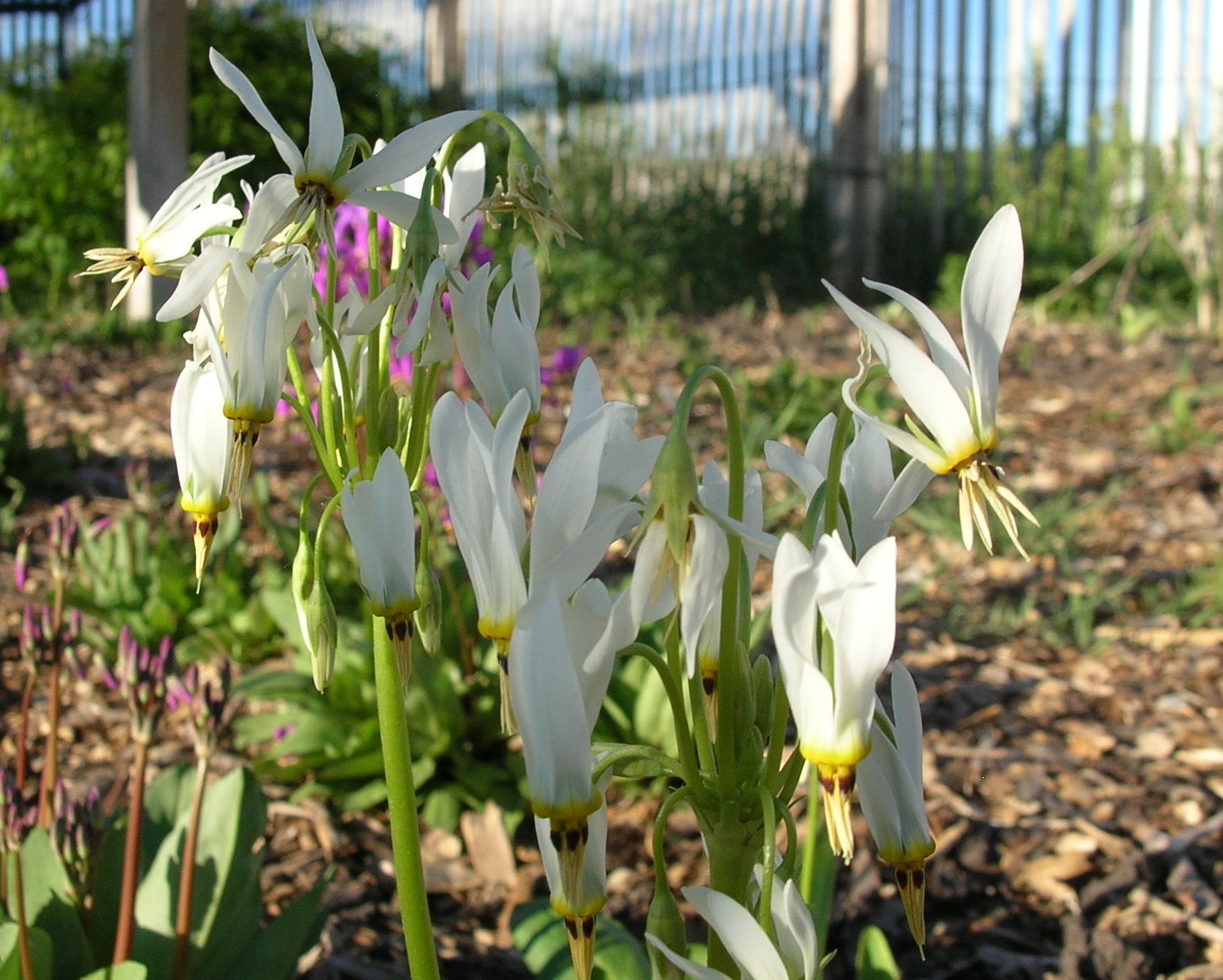








Leave a Reply